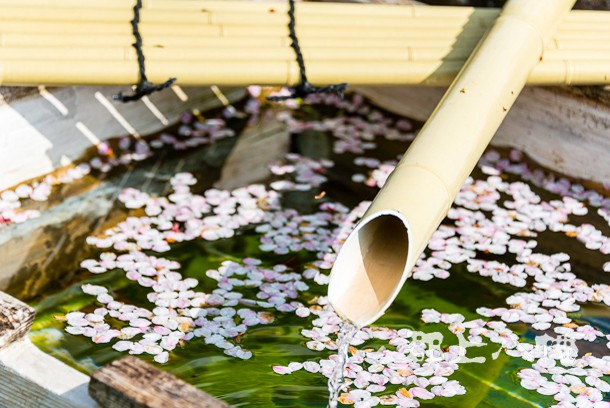
Gujo Hachiman is famous throughout Japan for its pristine rivers, water springs, and for maintaining traditional ecological practices that have kept the water running through the town exceptionally clean for centuries.
Visitors come to Gujo Hachiman from all over Japan to enjoy the pure mineral water that flows from every tap in town!
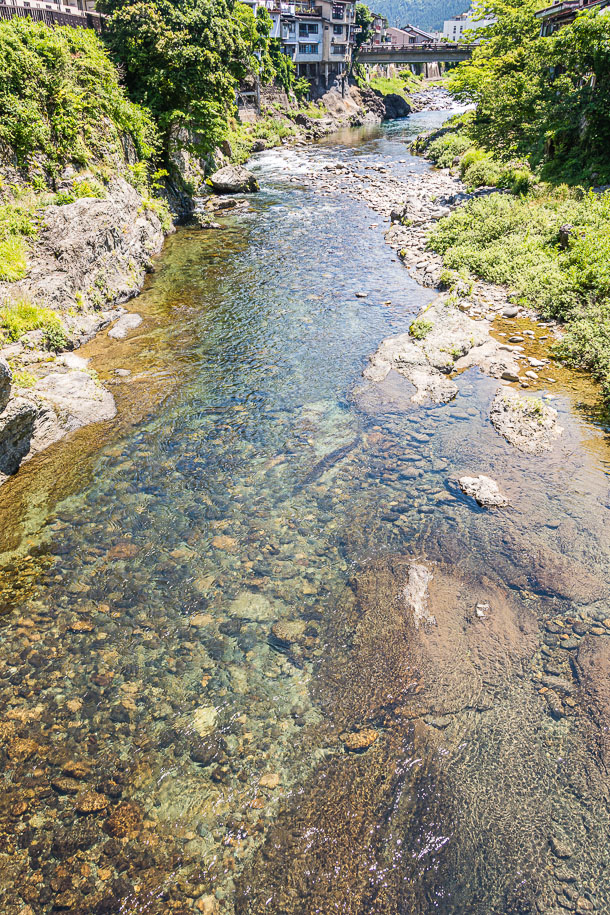
The Yoshida River as seen from Miyagase bashi
The Yoshida River flows from east to west through the centre of the town, where it is joined by the Kodara River and then flows into the larger Nagara River.
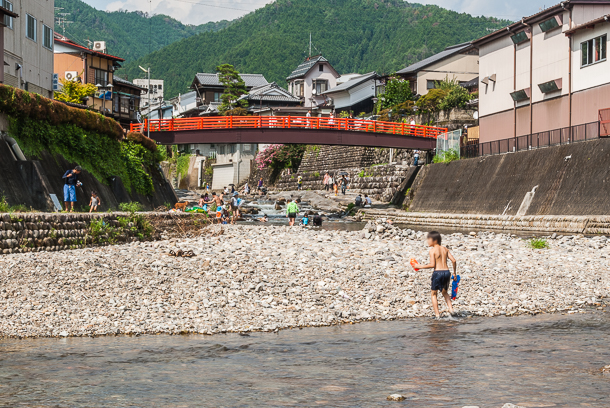
Where the Kodara River meets the Yoshida River is a popular place to swim and play in the water - especailly on hot summer days.
In spring, gentle pink cherry blossoms line the river banks. During the hot summer months, locals and visitors from all over Japan alike fish for delicious ayu (Japanese trout) a local delicacy; and local children jump from the town's main bridge into the cold river below in a time honoured rite of passage.
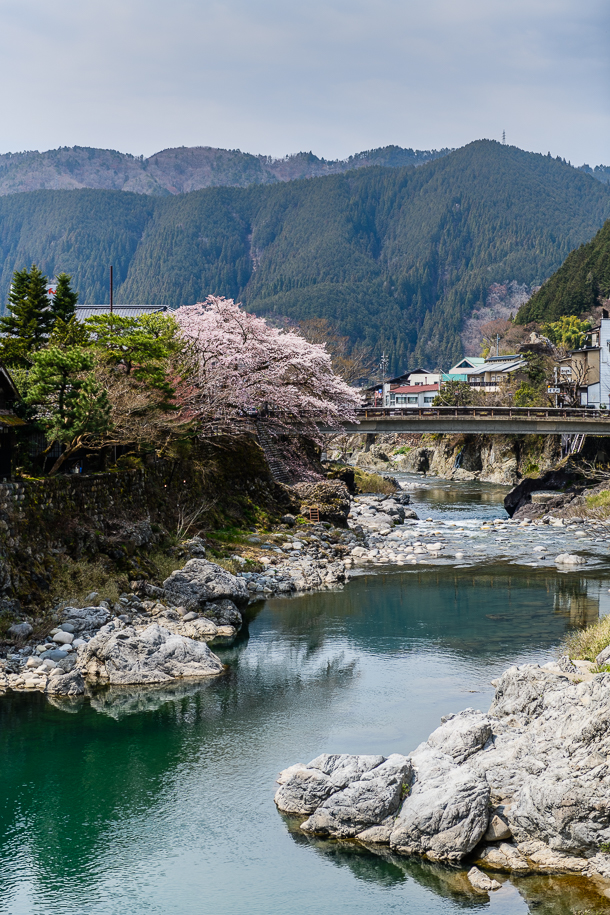
Locals wash radishes and turnips in the autumn to prepare pickles to be enjoyed in the coming winter months. In January, local indigo dyer and prefectural cultural asset Shokichi Watanabe uses the river's cold, clean, fast running water to fix the colourful natural dyes of his Koinobori boy's day wind socks.
The water is cold and fast flowing. It is also exceptionally clear. Water levels can change quickly, and locals know to exercise caution when walking next to the river, especially on rainy days.
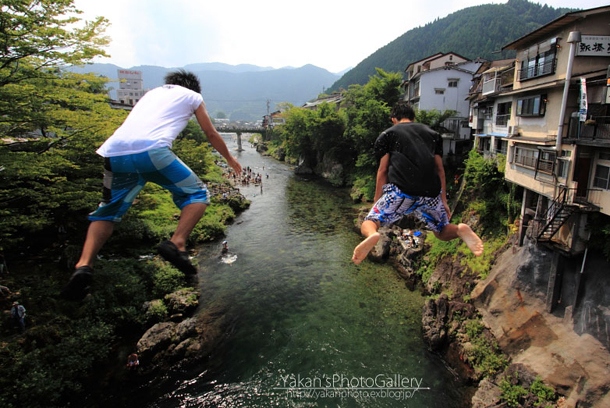
Please Use Caution
In the summer local children will jump into the Yoshida River from Shin bashi next to the Gujo Hachiman Kinenkan Tourist Centre. Water levels in the Yoshida River vary on a daily basis, and this practice is only safe at certain times of the year, when the water is sufficiently deep. Please never attempt to jump or dive from this bridge without expert guidance from a local.
Enjoy a virtual stroll along the Yoshida River.
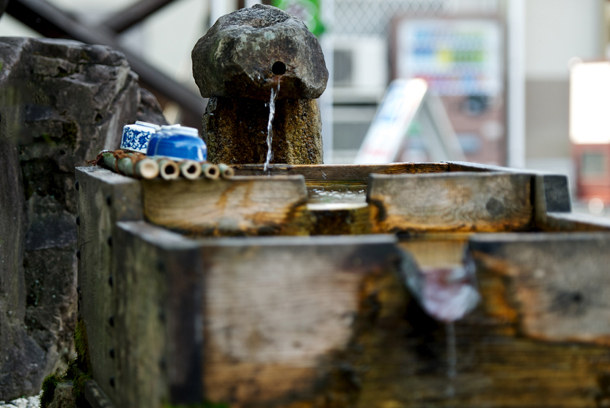
Old mizu fune in front of the Kinenkan Tourist Information Centre
Stroll through the streets of the town and you'll find many traditional mizu fune. These mizu fune, or "water boats" are unique to Gujo Hachiman and are an ecologically friendly system of tiered wooden or stone basins, where water flows down from the top basin into lower ones. Water from the spigot above the top basin is for drinking, and cups or glasses are often provided for that purpose. The lower basins are reserved for cooling or washing fresh vegetables, or in some cases even rinsing laundry.
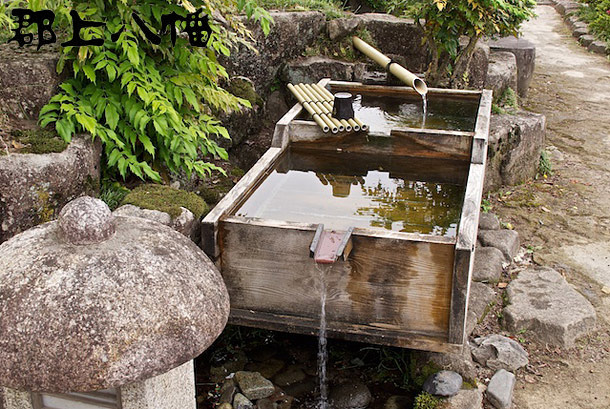
Mizu Fune in Nakagawra Parkette near where the Kodara River meets the Yoshida River
Map of where you can find the mizu fune in the above photos.
Water diverted upstream from the Yoshida River follows a small canal on its journey to the small streetside water canals on the south side of the town. Igawa Ko Michi follows the length of this canal offering a peaceful place to walk and enjoy unique views of daily town life.
The small platforms built over the canal are for household use e.g. rinsing household laundry, washing vegetables etc. Each of these small platforms displays on wooden blocks the names of the families who share in its care and upkeep, and therefore have shared use of the platform.
Well fed coi fish call this canal home and are regularly fed by visitors and locals alike. These fish will often congregate near people standing along the canal, as if begging to be fed. Small packets of fish food can be purchased for 100 JPY from food dispensers along the path.
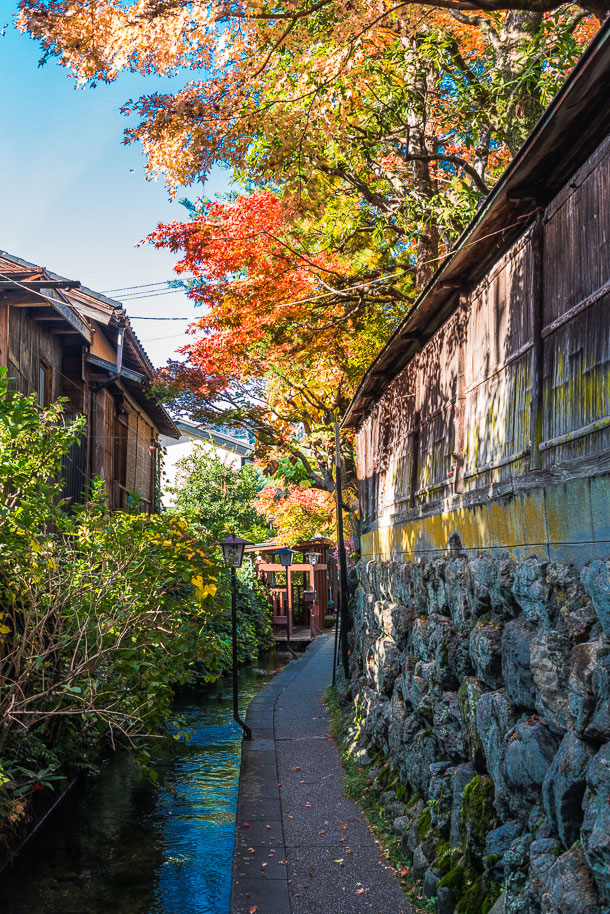
Igawa Ko michi in the autumn
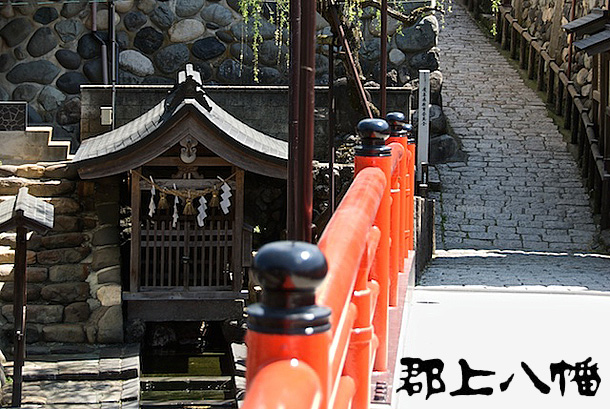
Sogi Sui water spring is the famous site and shrine where fifteenth century poet Sogi and local feudal lord To Tsuneyori exchanged farewell poems when the poet returned to Kyoto after visiting Gujo Hachiman.
The water spring and small shrine are recognized by the Japanese Ministry of Environment for both ecological and historical significance and Sogi Sui is listed as one of Japan's 100 Remarkable Waters. The list's purpose is to raise public awareness of natural water and nature conservation. The selection criteria for Japan's 100 Remarkable Waters are not limited to water quality and preservation of surrounding environment, but also take into account history, uniqueness, and local people's effort to protect the sources.
This shrine is extremely popular with Japanese visitors. It features an elongated mizu fune supplied from the natural spring underneath the small shrine building. The lower basins of the mizu fune are often used in the summer by tourists and locals to cool bottled drinks and watermelons.
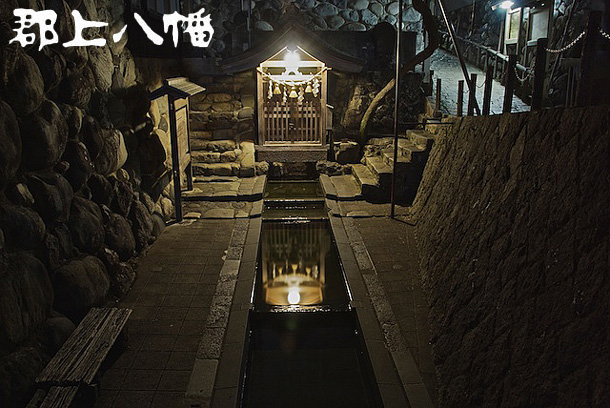
Sogi Sui Shrine at night
![]() Sogi Sui Shrine Close Up
Sogi Sui Shrine Close Up
![]() Sogi Sui Shrine and view of the Kodara River
Sogi Sui Shrine and view of the Kodara River
Gujo Hachiman has a complex system of water canals that provide both fire protection and water for daily household use. This system of water canals was built in 1660 after a fire destroyed most of the town in 1652.
Today, some residents can be seen using the town's unique system of small waterways to wash household laundry and dishes. They follow a very strict set of rules that set out what articles may be washed where - a local practice that has survived for centuries and ensures that all households have access to clean water.
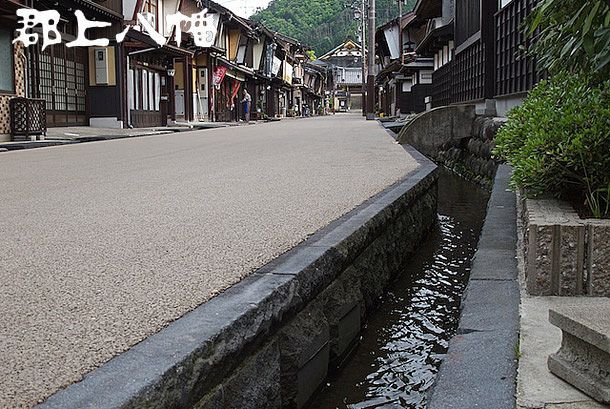
>Small streetside water canals along Kajiya machi in the historic town centre
Historic streets in the designated "Important Preservation District for Groups of Historic Buildings" are outlined in blue. These streets have very visible small streetside water canals.
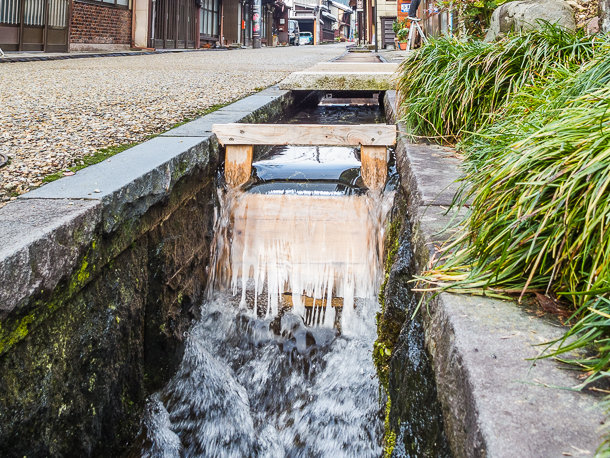
You may notice small dam like structures placed in the waterway. This is done to make it easier to access the water and wash vegetables etc..
Visit us in person:
Kinenkan Tourism Centre
501-4222
520-1, Shimadani,
Hachiman Cho,
Gujo Shi, Gifu ken,
Japan
Hours:
9:00 am - 5:00 pm daily
9:00 am - 6:00 pm during Gujo Odori season
Phone: 0575 67-0002